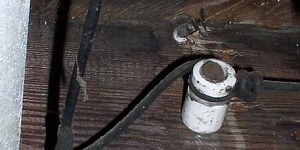 Very commonly seen in older homes, knob and tube wiring can be somewhat a controversial topic. Even though this type of wiring may not always pose an issue, many homeowners can be denied insurance or even loans if their homes have knob and tube wiring. Most people believe that this type of wiring is not up to par to more modern wiring, but this might not always be the case. It is important to understand knob and tube wiring in order to decide whether or not it needs to be replaced.
Very commonly seen in older homes, knob and tube wiring can be somewhat a controversial topic. Even though this type of wiring may not always pose an issue, many homeowners can be denied insurance or even loans if their homes have knob and tube wiring. Most people believe that this type of wiring is not up to par to more modern wiring, but this might not always be the case. It is important to understand knob and tube wiring in order to decide whether or not it needs to be replaced.
Knob and tube wiring was a popular form of house wiring used up until the 1950s. The name comes from the ceramic knobs used as support and the ceramic tubes used to protect the wiring as it goes through the wood framing.
The big difference between modern wiring and knob and tube wiring is that the wires are run separately and spaced apart in knob and tube wiring. Today all the wires are wrapped together in a single cable.
Insulation is another different between the wiring techniques and often one of the reasons knob and tube wiring is replaced. Modern wiring used plastic as insulation while knob and tube uses rubber. Rubber breaks down more often than its plastic counterpart due to overheating or mechanical abuse.
Knob and tube does have one advantage over mordern wiring. The copper wire found in knob and tube wiring is larger in diameter than those seen in modern wiring. This allows the wires to stay cooler while electricity is flowing through them. While this is seen as an advantage, the wiring is often older and more used which counteracts the advantage.
Modern wiring perhaps has the biggest advantage with the presence of a ground wire. A ground wire allows stray electricity to be released properly to avoid shocks. This not only protects you from receiving a shock, but also helps save your appliances from damage.
Common Problems with Knob and Tube Wiring
Connection Problems-
The most common problem with knob and tube wirign almost always comes as a result from when the original installation was completed and the connections were not done correctly.
Frailty-
The insulation made of rubber can become frail and brittle in areas that receive a lot of heat. This can cause shocks and fires.
Wear and Tear-
Since knob and tube was popular before the 1950s, it is usually older and has seen many repairs over the years.
All these problems combined can cause knob and tube wiring to short out or overheat.
It’s not always necessary to have knob and tube wiring replaced in your home. Since it is older, it is important to have it inspected annually to insure that it is still in working order.
If you’re not experiencing any issues and would like to have it replaced, the best time to replace the knob and tube wiring in your home is during a remodel. Having it replaces during a remodel will be less expensive because you’ll have the walls and ceiling open allowing easier access to the wiring.
If you are noticing shorting and overheating, get it replaced immediately.
Need A House Rewire Quote?
Just fill out the form below and we will get back to you as soon as possible with a quote for your house rewire.




